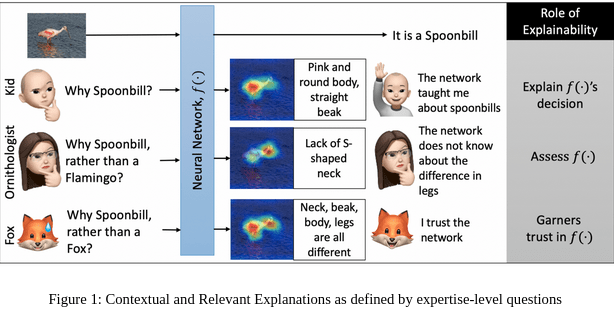
Presented by: Ghassan AlRegib, and Mohit Prabhushankar
Georgia Institute of Technology
Title: Robust Neural Networks: Explainability, Uncertainty, and Intervenability
Abstract: Neural network driven applications like ChatGPT suffer from hallucinations where they confidently provide inaccurate information. A fundamental reason for this inaccuracy is the lack of robust measures that are applied on the underlying neural network predictions. In this tutorial, we identify and expound on three human-centric robustness measures, namely explainability, uncertainty, and intervenability, that every decision made by a neural network must be equipped and evaluated with. Explainability and uncertainty research fields are accompanied by a large body of literature that analyze decisions. Intervenability, on the other hand, has gained recent prominence due its inclusion in the GDPR regulations and a surge in prompting-based neural network architectures. In this tutorial, we connect all three fields using gradient-based techniques to create robust machine learning models.
Speakers

Ghassan AlRegib is currently the John and McCarty Chair Professor in the School of Electrical and Computer Engineering at the Georgia Institute of Technology. He received the ECE Outstanding Junior Faculty Member Award, in 2008 and the 2017 Denning Faculty Award for Global Engagement. His research group, the Omni Lab for Intelligent Visual Engineering and Science (OLIVES) works on research projects related to machine learning, image and video processing, image and video understanding, seismic interpretation, machine learning for ophthalmology, and video analytics. He has participated in several service activities within the IEEE. He served as the TP co-Chair for ICIP 2020. He is an IEEE Fellow.

Mohit Prabhushankar received his Ph.D. degree in electrical engineering from the Georgia Institute of Technology (Georgia Tech), Atlanta, Georgia, 30332, USA, in 2021. He is currently a Postdoctoral Research Fellow in the School of Electrical and Computer Engineering at the Georgia Institute of Technology in the Omni Lab for Intelligent Visual Engineering and Science (OLIVES). He is working in the fields of image processing, machine learning, active learning, healthcare, and robust and explainable AI. He is the recipient of the Best Paper award at ICIP 2019 and Top Viewed Special Session Paper Award at ICIP 2020. He is the recipient of the ECE Outstanding Graduate Teaching Award, the CSIP Research award, and of the Roger P Webb ECE Graduate Research Excellence award, all in 2022.
Detailed Description
Goals and Subtopics: The goal of the tutorial is threefold: 1) Decompose modern large-scale neural network robustness into three manageable and human-centric measures, 2) Probabilistically define post-hoc explainability, uncertainty, and intervenability measures, and 3) Compute the three measures as a function of the input, network and output with a focus on real life applications in medical, seismic and AV domains. The detailed subtopics are provided in the Outline section below.
Relevance to attendees: Deep learning has shown a high degree of applicability in multiple fields that provide access to big data. As deep learning-based AI systems transition from academia to everyday life, their vulnerabilities must be understood before acceptance by the public. A key vulnerability is the lack of knowledge regarding a neural network’s operational limits. This vulnerability is viewed as a lack of robustness in neural networks. In the past, simple measures of robustness that have served the research community include input noise analysis and out-of-distribution recognition. However, large vision models with billions of parameters are vulnerable to other engineered and adversarial noise as well as being uncalibrated with regards to their prediction probabilities. Moreover, they are designed as end-to-end systems that have limited possible human interventions. Recently, prompt-based architectures that allow limited inputs from users during inference stage have gained prominence. This is a timely tutorial that emphasizes the robustness of neural networks in terms of human-centric measures which aids in their widespread applicability.
Target Audience: This tutorial is intended for graduate students, researchers and engineers working in different topics related to visual information processing and robust machine learning.
Content Level: Time spent in the short course regarding content level will roughly be split as follows – 10% beginner, 65% intermediate, and 25% advanced.
Audience Prerequisites: Audience are expected to have a basic understanding of neural networks and robustness applications including image recognition and detection.
General Description of Content: Neural networks provide generalizable and task independent representation spaces that have garnered widespread applicability in image understanding applications. The complicated semantics of feature interactions within image data has been broken down into a set of non-linear functions, convolution parameters, attention, as well as multi-modal inputs among others. The complexity of these operations has introduced multiple vulnerabilities within neural network architectures. These vulnerabilities include adversarial samples, confidence calibration issues, and catastrophic forgetting among others. Given that AI promises to herald the fourth industrial revolution, it is critical to understand and overcome these vulnerabilities. Doing so requires creating robust neural networks that drive the AI systems. Defining robustness, however, is not trivial. Simple measurements of invariance to noise and perturbations are not applicable in real life settings. In this tutorial, we provide a human-centric approach to understanding robustness in neural networks that allow AI to function in society. Doing so allows us to state the following: 1) All neural networks must be equipped to provide contextual and relevant explanations to humans, 2) Neural networks must know when and what they don’t know, 3) Neural Networks must be equipped with being intervened upon by humans at any stage of their decision-making process. These three statements call for robust neural networks to be explainable, equipped with uncertainty quantification, and be intervenable.
We provide a probabilistic post-hoc analysis of explainability, uncertainty, and intervenability. Post-hoc implies that a decision has already been made. A simple example of post-hoc contextual and relevant explanations is shown in Fig. 1. Given a well-trained neural network, regular explanations answer the question of `Why spoonbill?’ by highlighting the body of the bird. However, a more relevant question can be `Why spoonbill, rather than a Flamingo?’. Such a question requires the questioner to be aware of the features of a flamingo. If the network shows that the difference is in the lack of an S-shaped neck, then the questioner will be satisfied with the contextual answer provided. Contextual explanations build trust as well as assesses the neural network apart from explaining the decisions. In larger context, the goal of explainability must be to satisfy multiple stakeholders at various levels of expertise. This includes researchers, engineers, policymakers, and everyday users among others. In this tutorial, we expound on a gradient-based methodology that provides all the above explanations without requiring any retraining. Once a neural network is trained, it acts as a knowledge base through which different types of gradients can be used to traverse adversarial, contrastive, explanatory, counterfactual representation spaces. Apart from explanations, we demonstrate the utility these gradients to define uncertainty and intervenability. Several image understanding and robustness applications including anomaly, novelty, adversarial, and out-of-distribution image detection, image quality assessment, and noise recognition experiments among others will be discussed. In this tutorial, we examine the types, visual meanings, and interpretations of robustness as a human-centric measure of the utility of large-scale neural networks.
Cohesive Tutorial Content: Both tutorial presenters are from the Georgia Institute of Technology and have presented the content on multiple occasisons. A part of the tutorial content, with an emphasis on autonomous vehicles, was presented and well received at IEEE IV 2023. The relevant slides are present at [PDF], slide 85 onwards. The unlisted video link is at [Link]. More content from Explainability was presented as a tutorial at EUVIP 2021 [PDF]
Tutorial Outline
The tutorial is composed of four major parts. Part 1 discusses some recent surprising results regarding training neural networks with out-of-distribution (OOD) data, the conclusions of which are that it is not always clear when and how to use OOD in a big data setup. We use this as a motivation for the course material. Part 2 introduces the basic mathematical framework for each one of Explainability, Uncertainty, and Intervenability. Part 3 discusses Explainability and Uncertainty while part 4 discusses Intervenability exclusively. The outline, the presenter, as well as the expected time for each part is shown below.
Recent Relevant Publications
- AlRegib, Ghassan, and Mohit Prabhushankar. “Explanatory Paradigms in Neural Networks: Towards relevant and contextual explanations.” IEEE Signal Processing Magazine 39.4 (2022): 59-72.
- M. Prabhushankar, and G. AlRegib, “Introspective Learning : A Two-Stage Approach for Inference in Neural Networks,” in Advances in Neural Information Processing Systems (NeurIPS), New Orleans, LA,, Nov. 29 – Dec. 1 2022.
- J. Lee, M. Prabhushankar, and G. AlRegib, “Gradient-Based Adversarial and Out-of-Distribution Detection,” in International Conference on Machine Learning (ICML) Workshop on New Frontiers in Adversarial Machine Learning, Baltimore, MD, Jul. 2022.
- M. Prabhushankar and G. AlRegib, “Extracting Causal Visual Features for Limited Label Classification,” IEEE International Conference on Image Processing (ICIP), Anchorage, AK, Sept 2021.
- J. Lee and G. AlRegib, “Open-Set Recognition with Gradient-Based Representations,” IEEE International Conference on Image Processing (ICIP), Anchorage, AK, submitted on Jan. 18 2021.
- G. Kwon, M. Prabhushankar, D. Temel, and G. AlRegib, “Backpropagated Gradient Representations for Anomaly Detection,” in Proceedings of the European Conference on Computer Vision (ECCV), SEC, Glasgow, Aug. 23-28 2020.
- M. Prabhushankar, G. Kwon, D. Temel, and G. AlRegib, “Contrastive Explanations in Neural Networks,” in IEEE International Conference on Image Processing (ICIP), Abu Dhabi, United Arab Emirates, Oct. 2020. (Top Viewed Special Session Paper Award)
- Y. Sun, M. Prabhushankar, and G. AlRegib, “Implicit Saliency in Deep Neural Networks,” in IEEE International Conference on Image Processing (ICIP), Abu Dhabi, United Arab Emirates, Oct. 2020.
- G. Kwon, M. Prabhushankar, D. Temel, and G. AlRegib, “Novelty Detection Through Model-Based Characterization of Neural Networks,” in IEEE International Conference on Image Processing (ICIP), Abu Dhabi, United Arab Emirates, Oct. 2020.
- J. Lee and G. AlRegib, “Gradients as a Measure of Uncertainty in Neural Networks,” in IEEE International Conference on Image Processing (ICIP), Abu Dhabi, United Arab Emirates, Oct. 2020.
- M. Prabhushankar*, G. Kwon*, D. Temel and G. AIRegib, “Distorted Representation Space Characterization Through Backpropagated Gradients,” 2019 IEEE International Conference on Image Processing (ICIP), Taipei, Taiwan, 2019, pp. 2651-2655. (* : equal contribution, Best Paper Award (top 0.1%))


